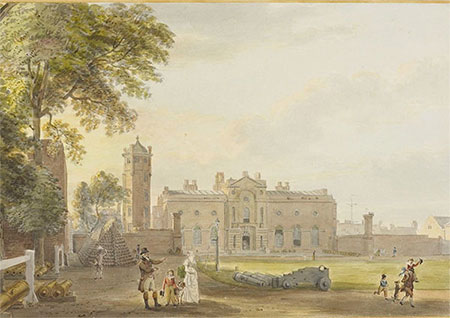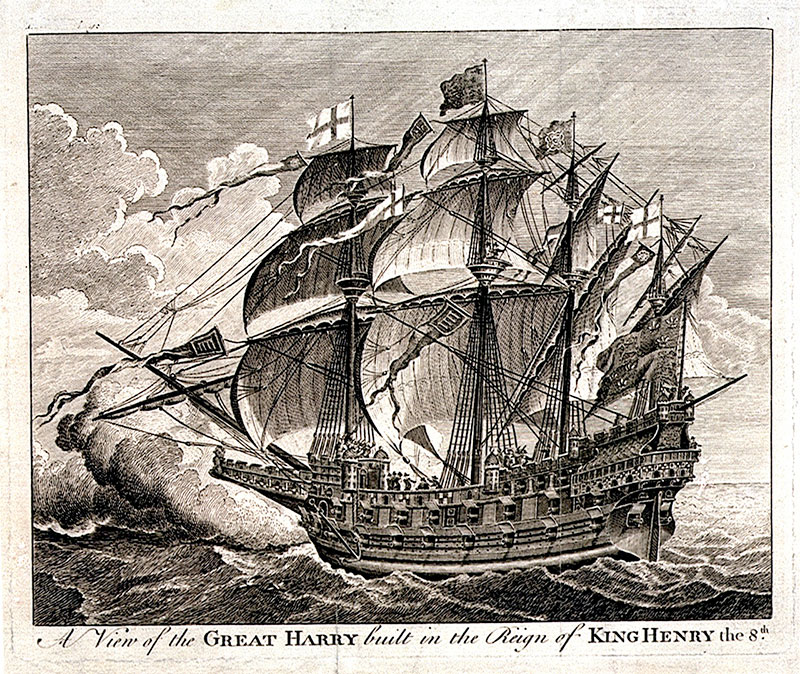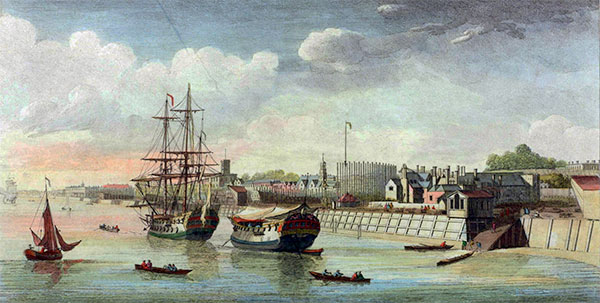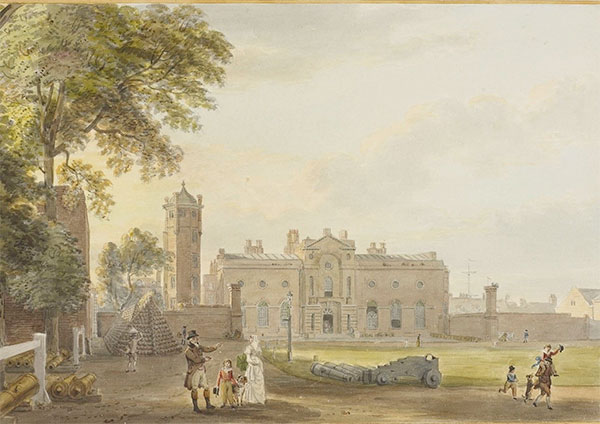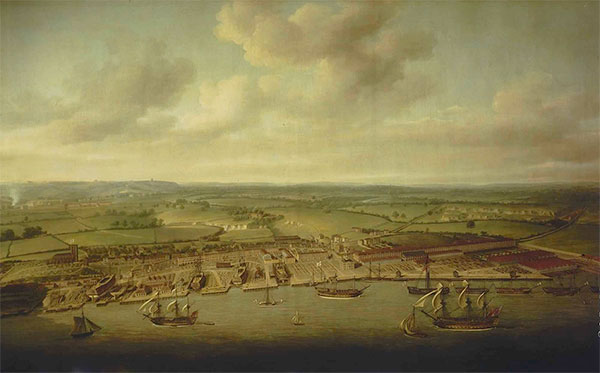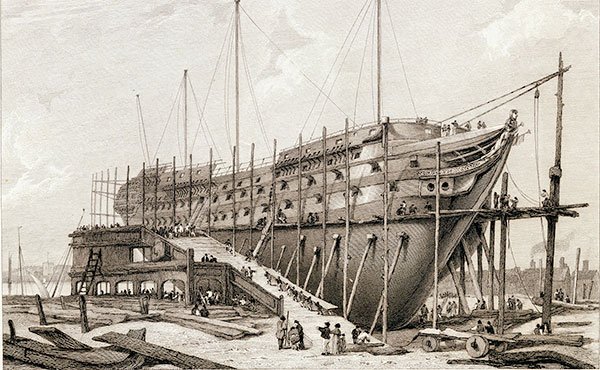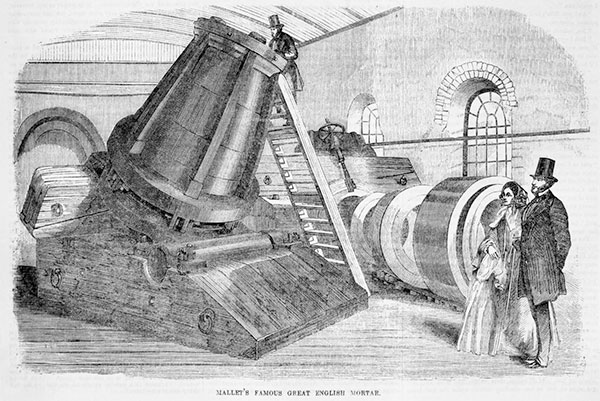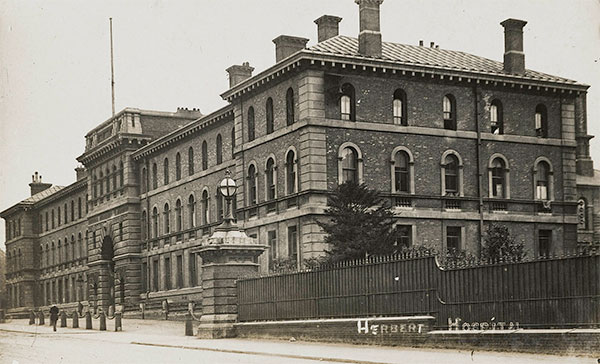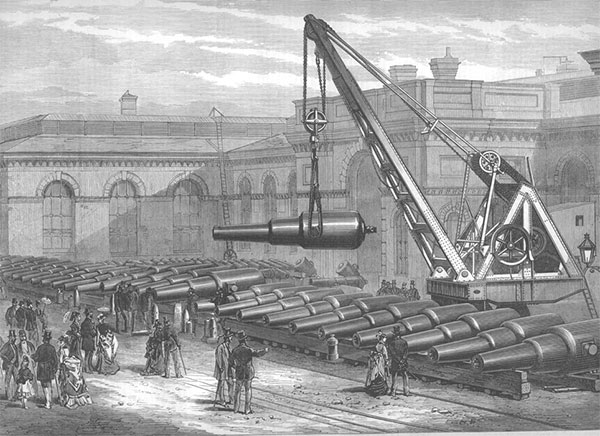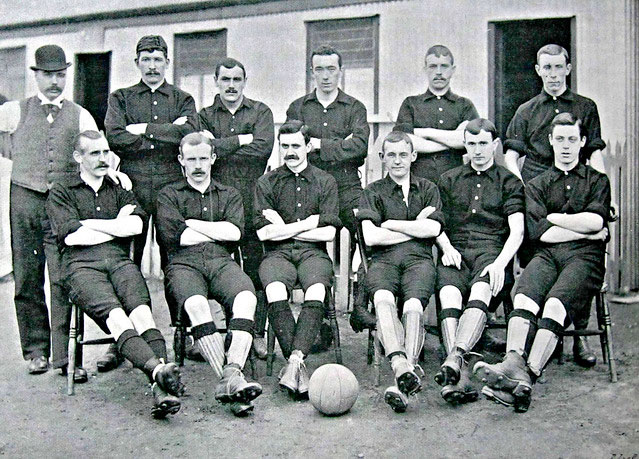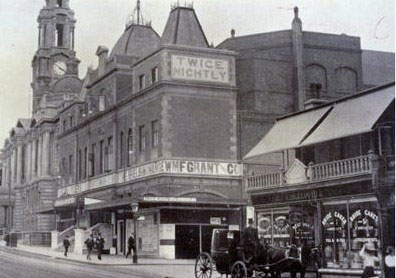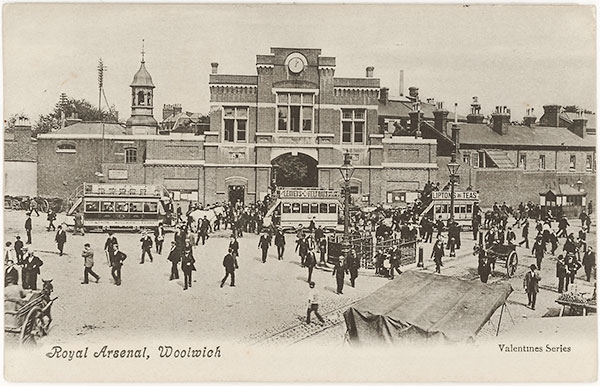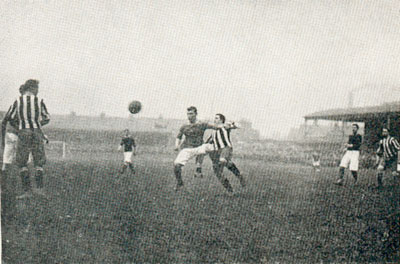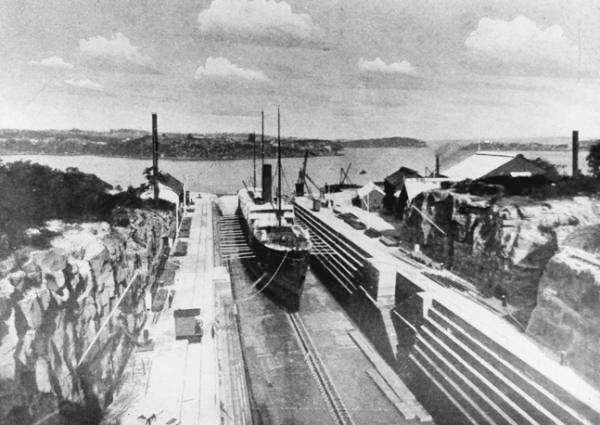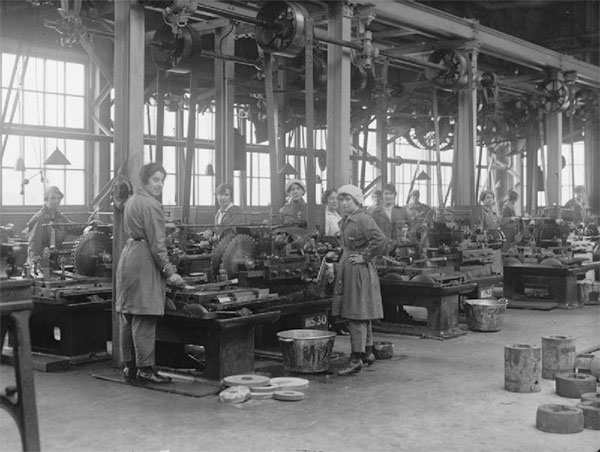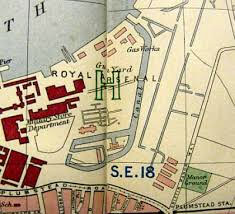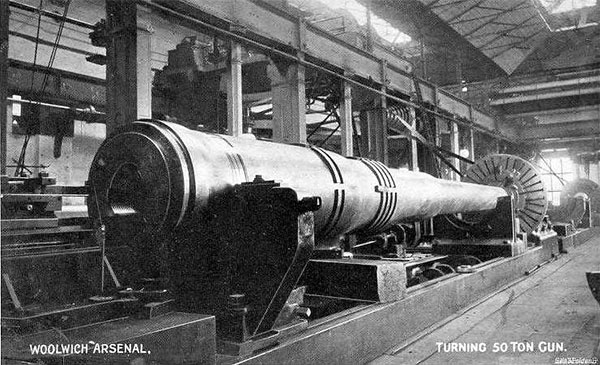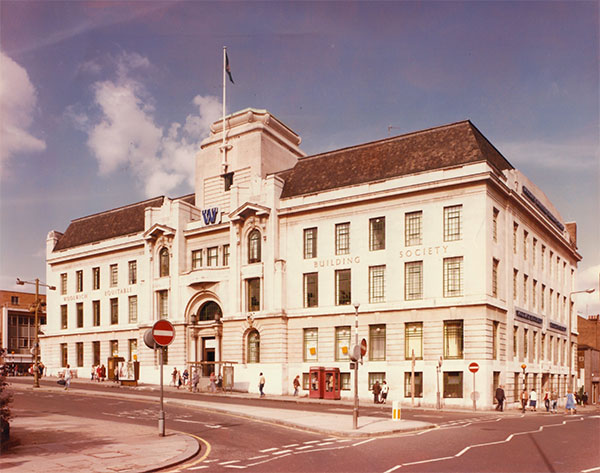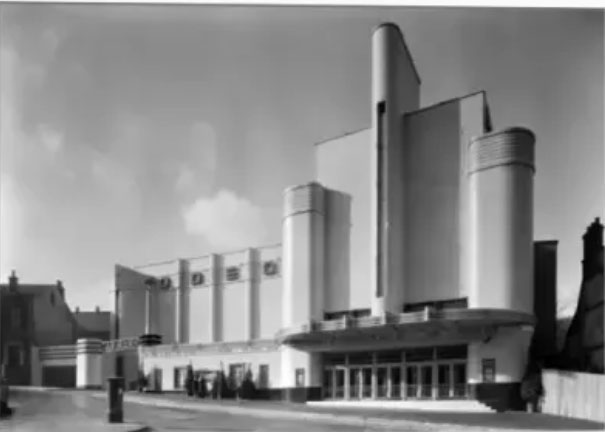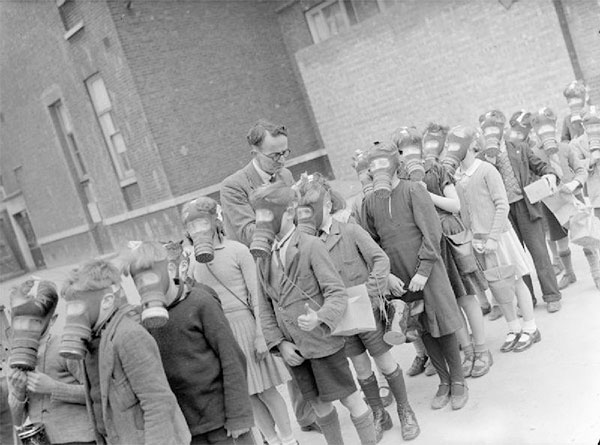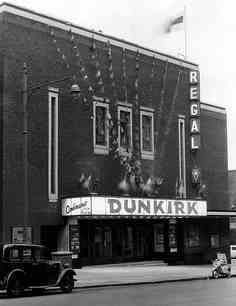| A timeline history of Woolwich with prints, photographs and maps. Click on images to enlarge. Brought to you by The Woolwich Guide. Part of The South London Guide (est. 1999). |
|---|
Saxon
Woolwich
Woolwich may have meant 'port from which wool was shipped.'
Medieval Woolwich
1380 Ferry recorded at Woolwich.
Tudor Woolwich
1512 Royal Dockyard opened at Woolwich.
1514 The ship Henry Grace of God (also known as Great Harry) built at purpose-built Gun Wharf. First ship of War with gunports, the largest (1500 tons) and most powerful warship in Europe. Engraving by Hans Holbein
1540s Tower Place built for Martin Bowers (c. 1497-1566).
1553 Great Harry built at Woolwich.
1559 Queen Elizabeth ship launched by Queen Elizabeth.
Stuart Woolwich
1603 Early reference to ordnance works in Woolwich. Later Woolwich warren.
1662 Pepys visited Woolwich.
1667 English Navy sank own ships as a blockade in Dutch Wars.
1671 Woolwich warren extended after Crown bought adjoining estate, Tower Place.
1696 Royal Laboratory opened.
Georgian Woolwich
1717 Royal Brass Foundry (by Vanbrugh?) established.
1717 Dial Square (Smithy etc) opened.
1739 Church of St Mary Magdalene rebuilt from 1727 by Matthew Spray with money from the Fifty New Churches Act of 1711.
1750 Woolwich Dockyard by John Boydell (1720-1804)
1752 Cadets' Quarters built.
1771 a third Royal Regiment of Artillery numbered over 2,400, quartered in Woolwich.
1772 Verbruggen's House built.
1776 Having outgrown its barracks in the Warren, the regiment relocated to Woolwich Common with eastern half of Royal Artillery Barracks built.
c. The Royal Military Academy at Woolwich by Paul Sandby (1731-1809)
1778 Specialist training for Artillery officers was undertaken at the Royal Military Academy n Woolwich
1784 Admiral-Superintendent's House & Office built for Old Royal Naval Dockyard.
1789 Main guard house built for Royal Arsenal.
1790 Woolwich New Road built.
Print of Woolwich Dockyard.
1793 Royal Horse Artillery formed and a separate long barracks range built to the north of (and parallel with) the original Royal Military blocks
1800 Topographical Map Of The Country Twenty Miles Round London (Woolwich section)
1802 Royal Artillery Barracks expanded westwards.
1805 Woolwich Warren became known as Royal Arsenal after a visit by George III.
c. Thomas Street and William Street (now Calderwood Street) laid out, taking their names from the Powis brothers, Greenwich brewers.
1806 Royal Military Academy built by James Wyatt (1746–1813)
c. Wellington Street to improve road links between the military academy at Woolwich Common and the Royal Arsenal
1809 Middle Gate House built for Royal Arsenal.
Regency Woolwich
1813 Grand Store by James & Lewis Wyatt, opened.
1814 HMS Nelson launched at Woolwich Dockyard.
1821 Population of Woolwich - 17,000.
1828 Beresford Gate built as main entrance to the Royal Arsenal (upper part added in 1897).
1831 Omnibus service opened to London.
1834 Woolwich Steam Packet Ferry established.
Early Victorian Woolwich
1841 Graving Docks opened (now used for recreation).
1842 Woolwich Town Hall built on Wellington Street.
1842 St Peters Church opened.
1844 Steam Factory with 200 ft chimney opened.
1845 North Woolwich Old Station opened.
1847 Cambridge Barracks gateway built.
1848 Royal Yacht visited Woolwich Dockyard.
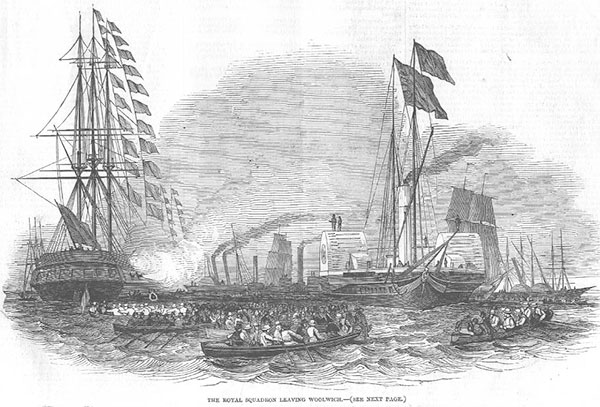
1849 Woolwich Arsenal Station opened on North Kent Line.
1855 Royal Arsenal now covered over 250 acres.
1857 Mallet's Geat English Mortar built (on display at Repository Road, opposite the barracks).
c1858 Armstong Rifle Factory opened.
Mid Victorian Woolwich
1860 Crimean War Memorial at Royal Artillery Barracks.
1865 Royal Herbert Hospital opened on Shooters Hill Road.
1869 Royal Docks closed.
1871 Population of Woolwich - 35,500.
1874 Woolwich Arsenal
1878 St Michael & All Angels built.
Late Victorian Woolwich
c1885 Woolwich Free Ferry Opened.
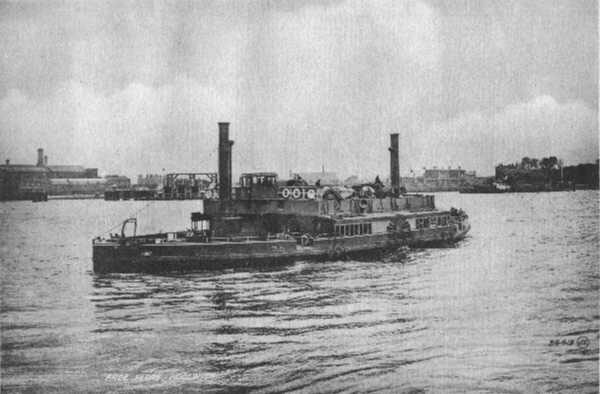
1886 Woolwich Arsenal Football Team established (1894 photo).
1890 Woolwich Polytechnic Young Men's Christian Institute opened on Calderwood Street. Later Woolwich Polytechnic & Greenwich University.
Edwardian Woolwich
1900 Borough of Lewisham formed from the parishes of Woolwich, Plumstead & Eltham.
Grand Theatre and Opera House opened on Wellington Street. Designed by Bertie Crewe (1860-1937). Renamed Hippodrome in 1908.
c1900 Royal Arsenal, Woolwich.
1901 Public Library established by Carnegie Foundation. Designed by Church, Quick & Whincop.
1906 New Woolwich Town Hall opened on opened on Wellington Street. Designed by Alfred Brumwell Thomas (1868-1948).
Woolwich Arsenal football match.
c.1908 Woolwich Dry Dock
1910 Police station opened.
1912 Woolwich Foot Tunnel opened by Lord Cheylesmore, the Chairman of the London County Council. Designed by Sir Maurice Fitzmaurice CMG (1861--1924) to allow Royal Erseanl workers to cross the River Thames. .
1912 Magistrates Court opened at 50 Calderwood Street (Grade II listed)..
Fire station in Eaglesfield Road probably by CC Winmill.
1913 Arsenal Cinema opened at 1 Beresford Square with 650 seats.
Woolwich in WW1
1916 Training Centre for Heavy Artillery was established, at Woolwich
Woolwich Tramshed built to generate the power for the local trams (It closed in 1953 and is now a community centre)
191? Women workers in the New Gun Factory
Inter-War Woolwich
1921 Map of Woolwich showing old canal and the Royal Arsenal.
1925 Woolwich Memorial Hospital by Pite & Fairweather.
c. 1925 Woolwich Ferry South Terminal, Woolwich
1926 Naval Dockyard sold to Royal Arsenal Cooperative Society.
19?? Photo of 50 Ton gun at Woolwich Arsenal.
1935 Woolwich Equitable Building Society opened on Vincent Road. Designed by LU Grace and WG Farmer.
Woolwich Indoor Market opened.
1937 Granada Cinema opened at 174-186 Powis Street with 2434 seats. Designed by Cecil Massey (1880-1960) & & RH Uren (1906-1988) with interiors by Theodore Komisarjevsky (1882-1954).
Odeon Cinema opened on Parsons Hill. Designed by George Coles (1884-1963). 1948 photo:
Woolwich in WW2
1938 Film of King George V1 visiting the Royal Arsenal (b&w film 0:36)
![]()
1939 Woolwich Hippodrome Theatre demolished (to make way for new cinema on site).
Old Woolwich Road School gas mask drill.
103 people were killed at Royal Arsenal and 770 injured, during 25 raids, by bombs, V-1s and V-2 rockets.
Post War Woolwich
1951 Wards of Woolwich Film (28 minutes)
1955 Regal Cinema opened at 38 Wellington Street (site of Woolwich Hippodrome). Designed by Cecil Jack Foster (1909-1996). Renamed ABC in 1963, closed in 1982 & demolished in 2015.
1961 Century Cinema, 1 Beresford Street, closed (demolished in 1968).
1961 Film of steam powered Woolwich ferries (Colour 7:32 mins) ![]()
1964 Documentary film on Woolwich (33:19) ![]()
1965 Metropolitan Borough of Woolwich abolished in and merged with Greenwich (North Woolwich with Newham).
1966 New terminals opened for Woolwich Free Ferry. Film (Colour 14:32 mins) ![]()
1966 Granada Cinema closed.
1967 Woolwich Royal Ordnance Factories closed. Eastern part of site given to Greater London Council to develop hosing at planned Thamesmead.
1981 IRA bombed Government House of the Royal Artillery on Woolwich New Road.
1981 Film of Woolwich market area and Royal Arsenal Gatehouse before new road layout (colour 2:19 mins)
![]()
1982 ABC Cinema at 38 Wellington Street closed.
1984 Queen Elizabeth II opened the new Thames Barrier at Charlton. (Colour film 3:28) ![]()
1986 New main road opened through section of the Arsenal, north of the listed Beresford Gatehouse thus splitting the old Gatehouse from the Arsenal. New gate built further north.
1988 Riverside Walk opened.
1994 Ministry of Defence moved out of Royal Arsenal.
1999 Coronet (ex-Odeon) cinema closed.
2001 Museum of Artillery moved from Rotunda to Firepower in Royal Arsenal.
2007 Royal Artillery headquarters moved from Woolwich to Larkhill, Wiltshire.
2016 Firepower museum closed in Royal Arsenal. Exhibits moved to Wiltshire.
Booklist
Records of Woolwich & District - WT Vincent (1890)
The Woolwich Story - EFE Jefferson (1970)
Discover Woolwich - Darrell Spurgeon (1990)
Woolwich Remembered - John Peters (1994 Pentland Press)
Greenwich & Woolwich in Old Photos - KD Clark (Alan Sutton)
Aspects of the Arsenal - Edited by B Burford & J Watson (Greenwich Borough
Museum)
Online:
Photos of Royal Arsenal
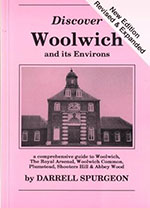
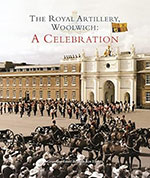
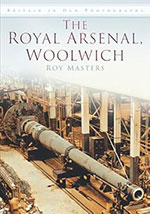
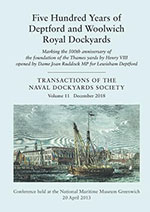
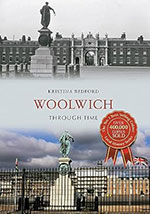
Lost Cinemas of Woolwich


